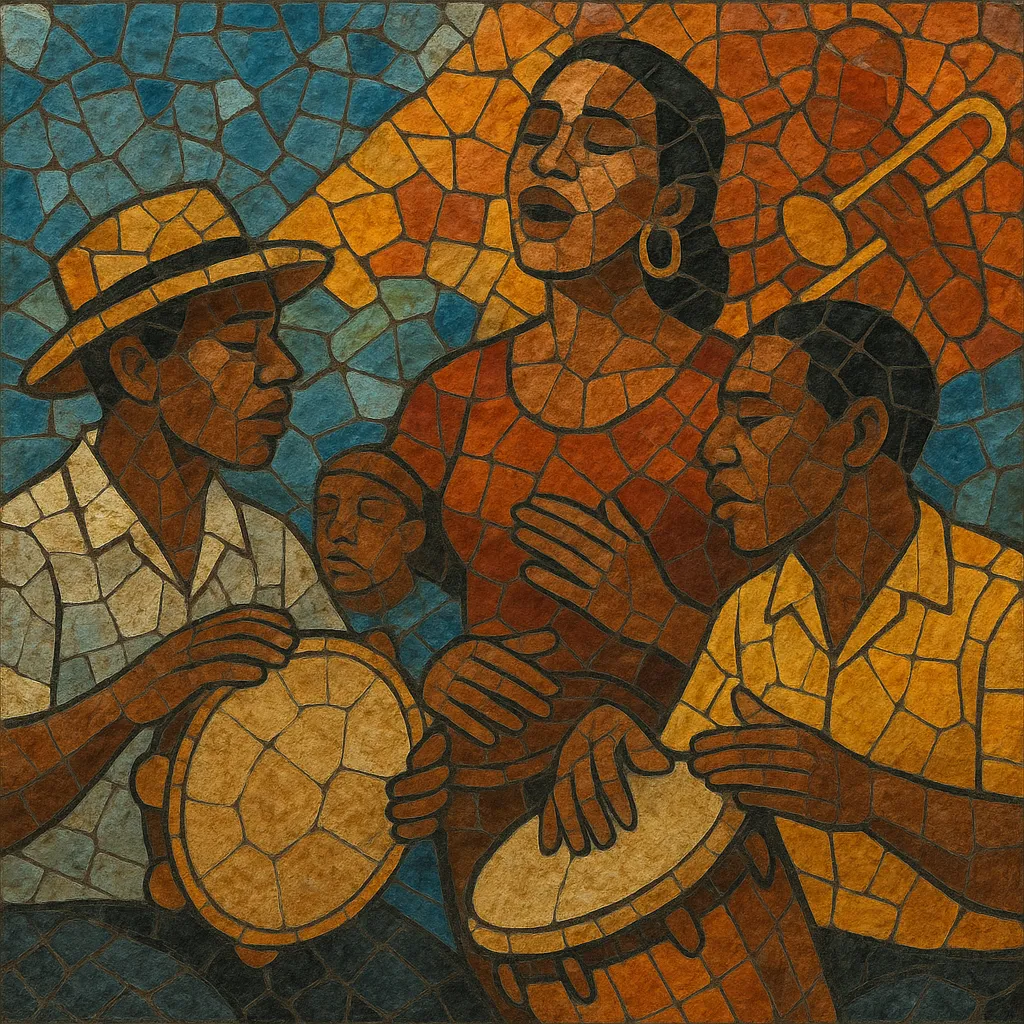Plena is an Afro–Puerto Rican music and dance genre that arose in working-class neighborhoods—most famously in Ponce and later Santurce—during the early 20th century. Often called the “periodical sung” (periódico cantado), plena songs chronicle everyday life, news, humor, and social commentary through concise verses and refrains.
The core sound centers on panderos de plena (a family of frame drums in three sizes), the güiro scraper, handclaps, and call‑and‑response vocals. Rhythms are typically in 2/4 or 4/4 with syncopations related to Afro-Caribbean cells such as the habanera. While harmony is generally simple (I–IV–V with occasional modal color), plena’s power lies in its infectious groove, topical lyrics, and communal participation—qualities that later ensembles expanded with bass, brass (notably trombones), and dance-band arrangements.
Plena emerged in the 1910s among Afro–Puerto Rican communities in Ponce. Street processions, neighborhood gatherings, and dance halls provided the context in which singers used topical, strophic verses to spread local news and commentary. The genre’s heartbeat was the pandero family—seguidor (low), segundo (middle), and requinto (lead)—supporting a güiro and call‑and‑response choruses.
By the 1930s, artists like Manuel “El Canario” Jiménez popularized plena on records, codifying canonical rhythms and repertoire. While instrumentation remained percussion‑centric, occasional string (cuatro, guitar) and voice arrangements broadened the style’s palette, bringing it into radio and dance circuits across the island and diaspora.
Rafael Cortijo and vocalist Ismael Rivera modernized plena by integrating it into combo formats, adding bass, piano, and horns, and taking the music to stages beyond community fiestas. Mon Rivera’s trombone‑driven approach further fused plena with big‑band aesthetics, laying groundwork that would feed into salsa and boogaloo’s New York scenes.
Puerto Rican communities in New York nurtured plena through folkloric and professional ensembles—e.g., Los Pleneros de la 21—preserving tradition while engaging jazz and urban influences. On the island, families such as the Cepedas championed bomba y plena heritage through performance, education, and festivals.
Groups like Plena Libre and Viento de Agua continue to innovate, expanding harmony and arrangement while maintaining the pandero‑güiro core. Today, plena thrives in folkloric contexts, university ensembles, and cross‑genre collaborations, and its rhythmic vocabulary echoes throughout salsa, Latin jazz, and contemporary Puerto Rican popular music.


